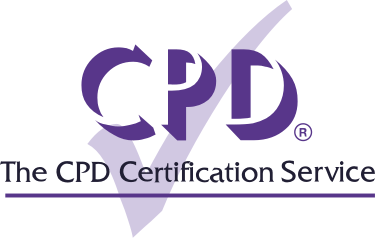This informal CPD article, ‘How to Speak and Be Heard Like a Leader’, was provided by Partnership Media Group, who deliver innovative, thought-provoking events for the public sector - ranging from conferences and exhibitions to training courses and forums.
As a leader, your language is responsible for providing clear direction for where the organisation is going, inspiring employees and gaining buy-in from senior staff members. Whether you’re new to leadership or an experienced leader who wants to develop leadership speaking skills to make an impact with every word, we’ve got the insights to do just that. In this article, we will explore tips and techniques on how to speak more like a leader and be heard by your team and senior leaders in the workplace.
Why is Speaking Like a Leader Important?
When you’re a leader, you need your own unique voice and you need to understand how to use it to your advantage. You may not think your team thinks about what you say and how you say it, but your words have a huge impact on their productivity and engagement.
There are many times where you will need to think and speak carefully. Particularly, in critical situations such as hiring, performance management, feedback, motivating and even disciplining employees. In conversations like these, your words are a way to connect with colleagues, establish trust and drive a positive narrative going forward.
Can Not Speaking Like a Leader Have an Impact on Your Team?
The State of Business Communication report in 2023 uncovered disadvantages of poor leadership language and communication on employees and organisations [1]. The study found that:
1. 50% have increased stress and burnout
2. 34% claimed poor communication decreased their job satisfaction
3. 30% said it lowered their professional confidence
4. 22% considered looking for a new job because of poor communication
This report highlights that there is now a more direct connection between effective communication and organisational results. Speaking more like a leader is one of the best ways to achieve goals and motivate your staff.
How is Leadership Language Different to Language Used in Non-Leadership Roles?
Leadership language is more focused on using language that articulates goals, inspires employees or gives clear direction and purpose. Leaders often have more responsibility, so there’s pressure to guide the vision of the organisation, empower the team and strategically communicate complex ideas through clear communication.
Compared to leadership language, those in non-leadership roles may use communication focused around seeking guidance, exchanging information, seeking clarification or implementing decisions.
Leadership language often uses:
- Greater intention and end goals in mind
- Influencing, persuading and motivating – a Sage Journals study on The Relationship Between Leader Motivating Language discovered that employee performance grows by 20% with higher motivating language, leading them to strong performance [2]
- Vision casting – using language to paint a picture of the future, vision and goals for the organisation
- Greater authority – especially to emphasise responsibility or communicate decisions
So, how can you start speaking like a leader? Below, we’ve delved into 5 top tips to help you speak and be heard.
How to Speak and Be Heard Like a Leader: 5 Top Tips
1. Know what you want
Unsure on what to say? Ensure you know what you want first. Say there’s a specific situation unfolding, before announcing decisions or opinions, ask yourself “do I fully understand what’s going on here? And what do I want to happen?” By fully understanding situations and how you want them to unfold, you can manage the situation and clearly communicate next steps or solutions.
2. Eliminate leadership jargon
Even when you think your audience may understand complex jargon, you can never be certain that everyone will. In most cases, it’s best to avoid jargon to avoid sending negative or confusing messages to your staff that could stop them from understanding how to move forward.
It’s easy to adopt jargon and buzzwords into your everyday language, but it’s unfair to assume that everyone else does the same. Keep your language simple to ensure everyone is on the same page and no one is left wondering what you just said. Changing phrases shouldn’t be a “quick fix”. They should be part of a wider priority to foster an environment of openness and clear communication within the team.
3. Use ‘we’ instead of ‘I’
Think about the why you express yourself. Being a leader is about shining the light on your employees instead of showing off your abilities. Switching from ‘I’ statements to ‘we’ helps you emotionally connect your language to others, build credibility and a safe space for open conversation.
4. Know your tone
Sometimes emotions get the better of us, but as a leader, it’s even more important for you to not let them do the talking. Being self-aware and knowing your tone in stressful or high-tensity situations can help you manage the way you come across.
If you don’t know your tone, ask your employees for feedback. Yes, you did read that right. It’s completely fine to ask for feedback on how to improve as a leader. After all, leader and employee relationships are about support, learning and growing together.
5. Listen first, then speak
Listening first and speaking second has many benefits for a leader, including:
- Learning and growth: Actively listening can help you learn from your team, gain insights and expand your understanding
- Building trust: This demonstrates respect for others’ opinions and encourages open communication [3]
- Informed decision-making: Not only can you gather more diverse viewpoints, you can also uncover potential implications before taking action
Use 100% of your attention on a person in a conversation, not half listening while you text or think about what’s for lunch. Practice listening first to be more inclusive and build a workforce that feels empowered, not a burden on your time.














